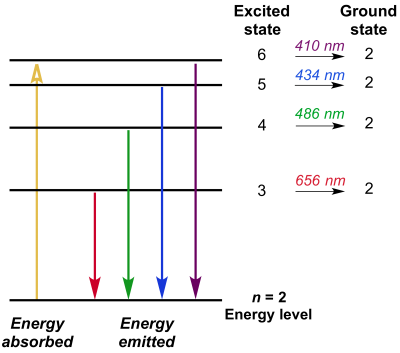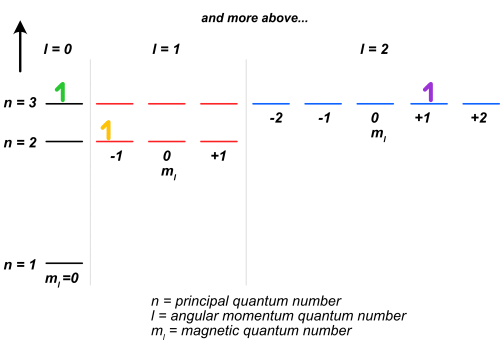Ch7 Lec 3
(4/24/20, bes)
Greetings,
- Congratulations for making it thru the week! Only 1.5 week left...or 5 more class periods...and one more lab.
EXAM 3 Announcement: Friday, May 1st (1 week from today) we will have Exam 3 (Ch 6 and 7) via WA. Just like last time, the WA-exam will be timed and available at 8 am. You may take the exam at anytime during the day, but once you open the assignment you have...60 mins...plus a BONUS 15 mins...75 min total. I want all exams completed by 5 pm, so you should start before 3:45 pm. If you know of a valid conflict please email to discuss.
I will be sending out an email when i get the Ch 7 WA completed...soon. It will not be due until next week Thurs 5 pm.
- ...continuing with Chapter 7...
Sec 7.4/7.5: The Dual Nature of the Electron and Quantum Mechanics
Read/skim these sections.
As i noted when discussing the emission spectrum of the H-atom, there were many "molecular-type" experiments that were done that classical mechanics (standard physics) could not explain. Hence the rise of quantum mechanics (QM). The following video is a nice explanation of the "double-slit" experiment that highlighted the "dual nature" of the electron...and introduces you to a few QM concepts.
Dr Quantum Wave particle duality...and the double slit experiment
Sec 7.6: Quantum Numbers
Let's go back to a figure presented in lecture 2...
This H-atom emission spectrum figure is derived from lots of experimental data and mathematical interpretation. The take home point is that electrons in an atom exist in particular energy levels/states. As stated, the quantum world follows a different set of laws than our macroscopic world we see all around us. I can make an analogy to people (electrons) in a building...the quantum energy levels are kind of like the floors of a multi-story building like CSB...CSB has floors 1, 2, and 3. A person can exist on any floor and at anytime we can count the number of people/floor...the key point is that every person is on "a" floor...1, 2, or 3 and these are the only options! ...sure you might find someone on the stairs going up or down, but the time spent on the stairs is minimal compared to being on a particular floor. The floors represent "levels or states" people represent electrons. Note also that in order to go from one floor to another this requires energy...1st --> 2nd requires input of energy; 3rd --> 2nd releases energy, etc.
Okay, so now that we know that electrons exist in well defined energy levels (or energy states...same thing), we need a way of keeping track of these levels. The values shown in the above figure, n = 2, then 3, 4, 5, 6...are called the "principal" number...or principal quantum number. Quantum numbers are an address system for electrons...
Another analogy...we all live in a country, and within this country we live in states, and within these states we live in towns, within a town we live on a street, and the house/apt/etc has a street number. This addressing system allows use to send a letter/package to a specific house/apt/etc by specifying an "address."
Example --> USA, IL, Monmouth, East 2nd Avenue, 915 ...we don't write out addresses like this, instead:
- 915 E. 2nd Ave.
- Monmouth, IL 61462 <--zip codes are for the postal service.
- USA <-- not needed under most situations.
- (yes, this is my home address...send me a letter and tell me how things are going, what are you doing this summer, etc)
In the quantum world, it turns out that the principal quantum number (Q#) is like the "state"...if IL (sorry to use the term "state" in 2 different ways...yeah English language!) To fully describe the address of an electron, we need to specify:
- 1) principle Q#, n
- 2) angular momentum Q#, l
- 3) magnetic Q#, ml and
- 4) spin Q#, ms
The energy level diagram below is for the hydrogen atom:
- There are 3 "colored" electrons shown, what are their quantum number?
| color | n - principal | l -angular | ml - magnetic |
| yellow | |||
| green | |||
| purple |
(n, l, ml) yellow -> (2, 1, -1), green -> (3, 0, 0), purple -> (3, 2, +1)

